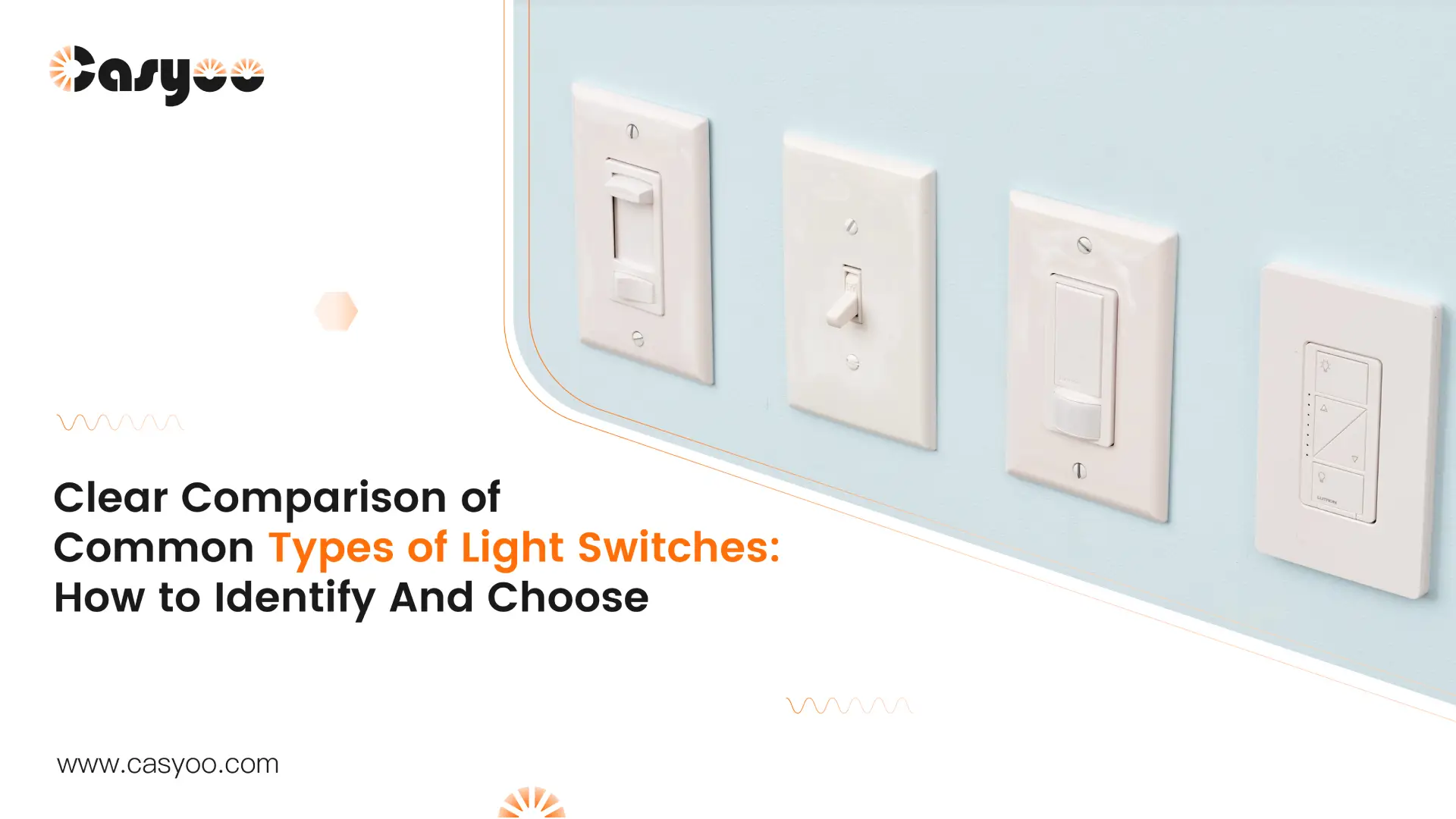Switches are constantly evolving and upgrading, and now there are various types of light switches. As the quality of people’s lives keeps improving, we want our switches to do more than just turning on or off the lights. People prefer to buy switches that can control the lights in multiple positions or switches with different functions. This post will teach you about the different types of light switches available and how to choose them. Don’t miss it!
Types of light switches in different configurations
While choosing light switches, you can first determine how many groups of lights the switch can control. If there is only one switch button, we often call this switch “1 gang” switch, which means it can control one group of lights. If this switch has 2 buttons, it is a 2 gang switch, which can control 2 groups of lights. And so on.
Secondly, you can consider whether this switch can control the same one or several groups of lights at different positions. With this kind of switch, you can control one light on both sides of the bedroom entrance and the bedside, or control the lights in the living room at the entrance and the corridor. We often use “way” to indicate how many locations the switch can control the same group or groups of lights from. For example:
- Single-pole switch (One way switch): one switch controls a group or groups of lights.
- Double-pole switch (Two way switch): switches in two positions control the same group or groups of lights.
- Three way switch: switches in three positions control the same group or groups of lights.
- Four way switch: switches in four positions control the same group or groups of lights.
How to identify switches based on different configurations?
The way to distinguish switches with different control methods is to look at the number of interfaces on the back. For example:
- 1 gang 1 way (single-pole) switch is the most simple switch, with only 2 terminals on the back, one for incoming wires and one for outgoing wires, and can only control one set of lights in one location.
- 1 gang 2 way switch has 3 terminals on the back, two for incoming wires and one for outgoing wires, and can control the same set of lights in 2 different locations.
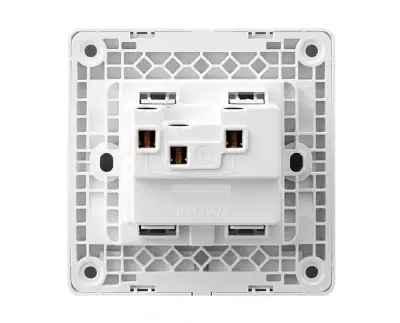
- 2 gang 2 way switch has 6 terminals on the back, 4 incoming wire ports and 2 outgoing wire ports, and can control the same 2 sets of lights in 2 different locations.
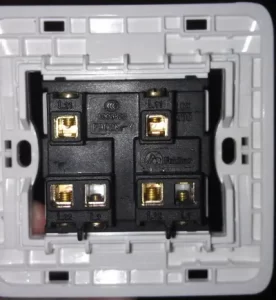
4 types of light switches in different styles
Toggle switch
By flipping the switch handle, a toggle switch turns the circuit on or off. Electronic toys, digital communications, electrical appliances, manufacturing, etc. can all employ toggle switches. Toggle switches are considered an older type of light switch and are now somewhat outdated.
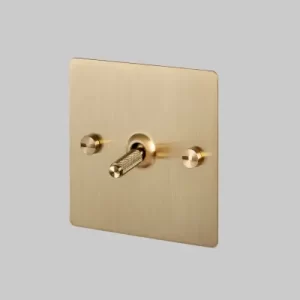
Slider switch
The main components of the slider switch include a slider and a fixed switch seat. The slider is usually made of metal or plastic material, with metal contact pieces or contacts at both ends. The switch seat is made of insulating material and has contact points that match the slider. The slide switch can have multiple contact points to achieve dimming of the lamp.
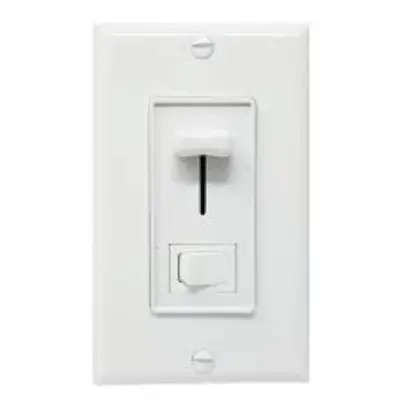
Rocker switch
The rocker switch is the most common type of switch. When there is no external force, the operating button is in a balanced state, the active contact and the fixed contact maintain a certain distance, and the circuit is in an open or closed state. When you press one end of the button, the button will rotate at the axis and drive the active contact to move, thereby changing the state of the circuit. The advantages of rocker switches include simple structure, convenient operation, high reliability, long life, simple maintenance, etc.
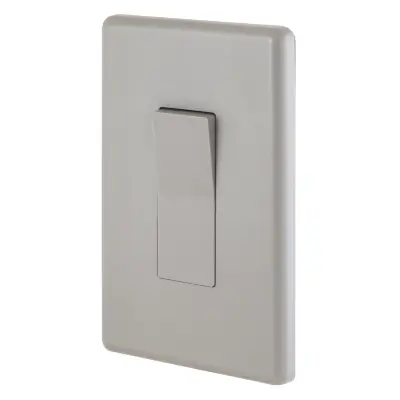
Touch switch
A touch switch is a smart electronic switch. When we use it, we can turn on the light by gently clicking the switch button, and then touch it again to turn off the light. A touch switch is suitable for places with a high usage rate. Its characteristics are more convenient and hygienic than ordinary rocker switches, but it is more troublesome to repair.
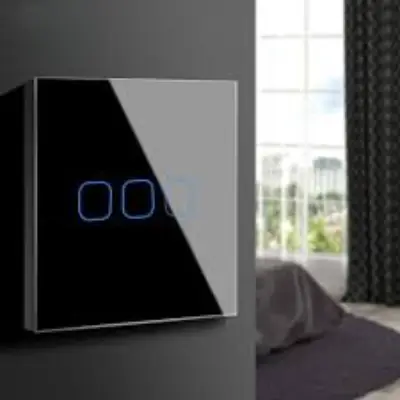
4 types of light switches with different functions
Touch delay switch
Touch the switch to light up the lamp, and the switch can delay for a period of time before automatically turning off the light. It is mostly used for stairwell lighting, which is beneficial to energy savings. The disadvantage is that you need to touch it multiple times while staying in the place for a longer time.
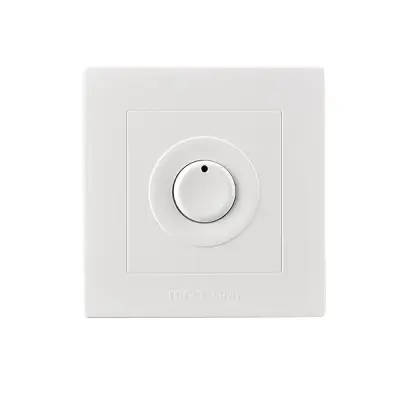
Infrared induction switch
By detecting infrared heat from the environment, the infrared induction switch may promptly turn on the lamp. When a person enters the sensing range, the pyroelectric infrared sensor detects the change of the infrared spectrum of the human body and automatically turns on the lights. As long as the person is in the sensing range, it will keep the lights on, and after the person leaves, the switch will automatically turn off the lights. Infrared induction switches are currently widely used and have saved a lot of energy.
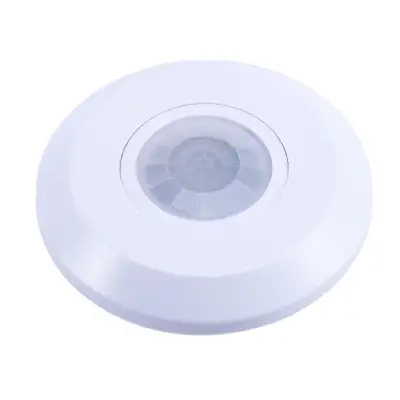
Dimmer switch
A dimmer switch connects directly to the lamp’s power circuit, and adjusts the brightness by regulating the light circuit’s power flow. Common dimming techniques include current regulation and pulse width modulation.
Dimmer switch vs regular switch:
- Style: Regular switches, typically sliding or toggle types, can only turn the light on or off. As for Dimmer switches, they are commonly available in sliding or touch-sensitive designs, and can change the brightness of light.
- Installation and wiring: Similar to smart switches, dimmer switches require both live and neutral wires to keep the dimming module working.
- Compatibility requirements: Dimmer switches can only be used with LED lights designed to support dimming.
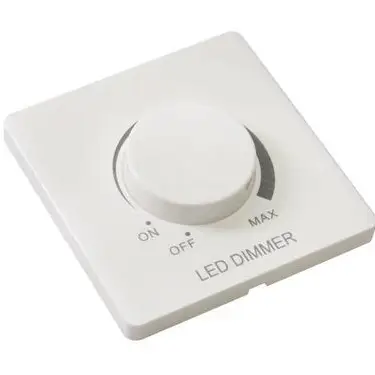
Smart Switch
Smart switches have gradually emerged in people’s homes in recent years with the rise of smart home devices. It combines and programs control panels and electronic devices to realize various smart controls. It can not only control multiple groups of lamps but also support voice control, mobile phone control, remote control, time control, induction control, etc. If there is a fault in a certain circuit, it can be directly controlled to be cut off so that it will not affect the operation of other circuits.
Smart switch vs regular switch:
- Installation and wiring: Smart light switch installation requires a neutral wire to continuously power the communication module, whereas traditional switches only need a live wire.
- Functions: Smart switches allow you to adjust the color, brightness, schedules, etc. of lighting, providing a much more customizable lighting experience.
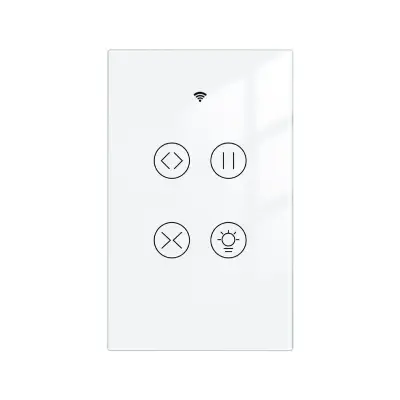
How to choose light switches?
Appearance
When buying a switch, consider whether its look complements the design of your house and whether its surface has any flaws, such as dust, contaminants, or dark patches. If there is damage, it is not recommended to buy it.
Touch
Check if the switch’s material feels smooth by touching it. Superior switches should have a smooth, bubble-free surface and be simpler to turn on than inferior switches.
Weight
Feel the switch’s weight when you hold it in your hand. Superior switches are constructed with copper sheets throughout, which contributes to their weight and durability. Low-quality switches may be made of lighter, less durable materials such as alloys and thin copper sheets.
For different rooms
- Best light switches for halls
- Induction switches: It is advisable to utilize induction switches for the hall lights as they provide convenient automatic lighting upon entering the door and eliminate the hassle of searching for switches.
- 2 way switch: A two-way switch between the entrance and the living room allows you to control the lights from either location.
- Best light switches for living room
- 2 way switch: A two-way switch makes it easier to operate from many locations, and it’s particularly helpful in the hallway connecting the living area and bedroom.
- Dimmer switch: To save electricity, you can use a dimmer switch to change the lamp’s brightness.
- Best light switches for bedroom
- 2 way switch:To prevent bumping when getting up in the middle of the night, you can conveniently regulate the lights at the door and the bedside with a 2 way switch.
- Switch height: Recommended switch height at bedtime is 0.55 to 0.58 meters for easy use when lying down.
- Best light switches for corridors
- Induction lamp: Use an induction lamp in the corridor to avoid strolling in the dark at night.
- Best light switches for toilets
- External switch: Place the toilet light switch outside the door to avoid groping in the dark.
- Protective design: The internal switches should be equipped with a splash-proof and moisture-proof baffle to ensure safety.
Conclusion
We can classify the light switches by their way of control, style, and functions. Knowing different types of light switches helps you find out the most suitable type for your home. And then you can choose the light switch according to our guidelines. Read more blogs for other tips for LED lights!
